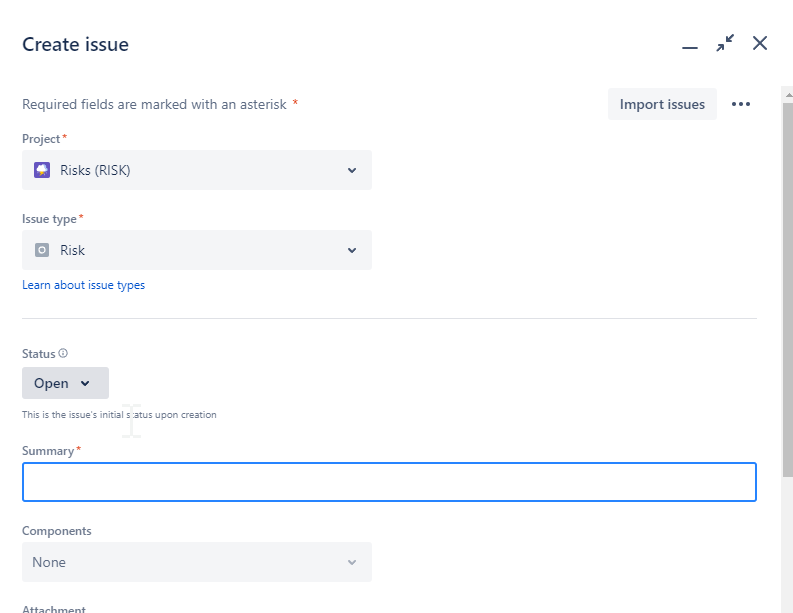How to manage (ROAM) risks with Advanced Roadmaps
Learn how to manage risks by using a Resolved, Owned, Accepted, Mitigated (ROAM)-based approach.
Background
Risk management is the discipline of identifying, monitoring, and limiting risks. Ideal risk management follows a prioritization process where the risks with the greatest loss and the greatest probability of occurring are handled first, and risks with a lower probability of occurrence and lower loss are handled next in descending order.
Effective risk management involves several factors:
- Identifying the risk.
- Analyzing each risk to determine its exposure (the severity of the impact).
- Prioritizing the identified risks based on their exposure.
- Creating action plans (responses) to deal with high-priority risks.
- Continuous monitoring and follow-up to ensure that your action plans are mitigating the risks.
Description
- Navigate to the risk board:
- Create any new risks needed.

- Ensure the risk is linked to the feature by using the parent link.
- Manage risks that emerged from the PI planning event by confirming or updating the status for each risk issue.
- Ensure that each risk has an owner.
- Update the risk status by moving the risk issue to the appropriate status column:
- Resolved: The risk is addressed and is no longer a concern.
- Owned: Someone takes responsibility for the risk.
- Accepted: Nothing more can be done. If the risk occurs, the release may be compromised.
- Mitigated: The team has a plan to adjust if necessary.
Output
You will have a current and transparent view of all risks and risk statuses.

References
Alternative approaches to managing risks:
Next step:
Output and next stepsWas this content helpful?
Connect, share, or get additional help
Atlassian Community